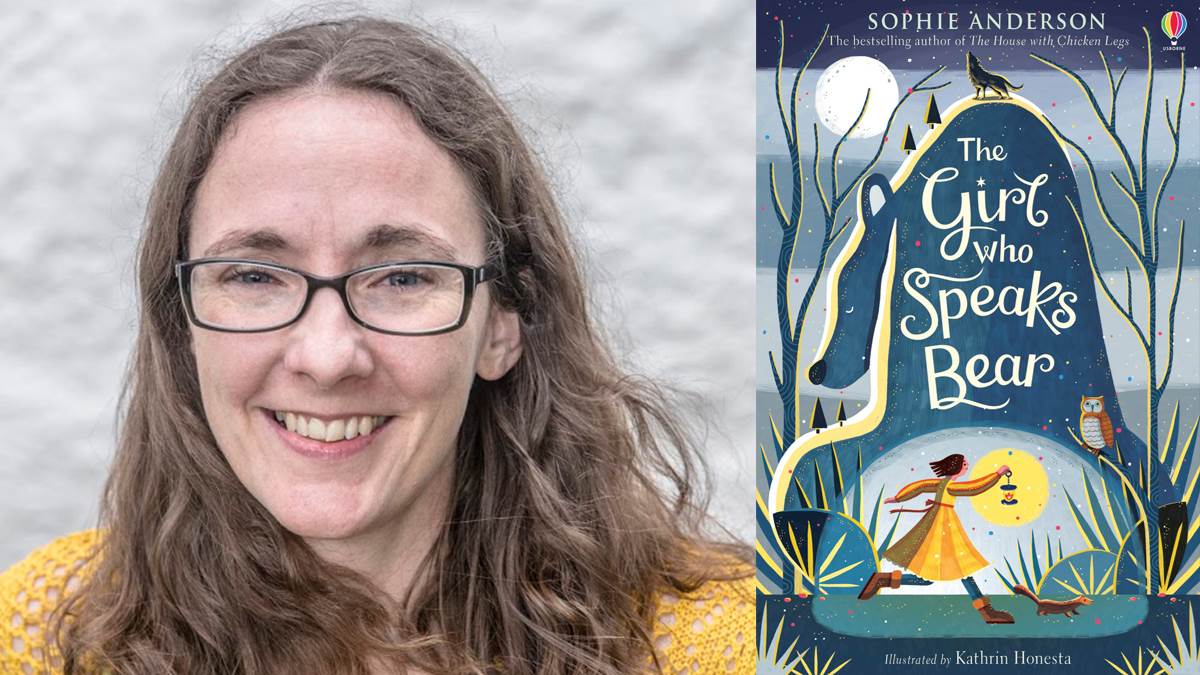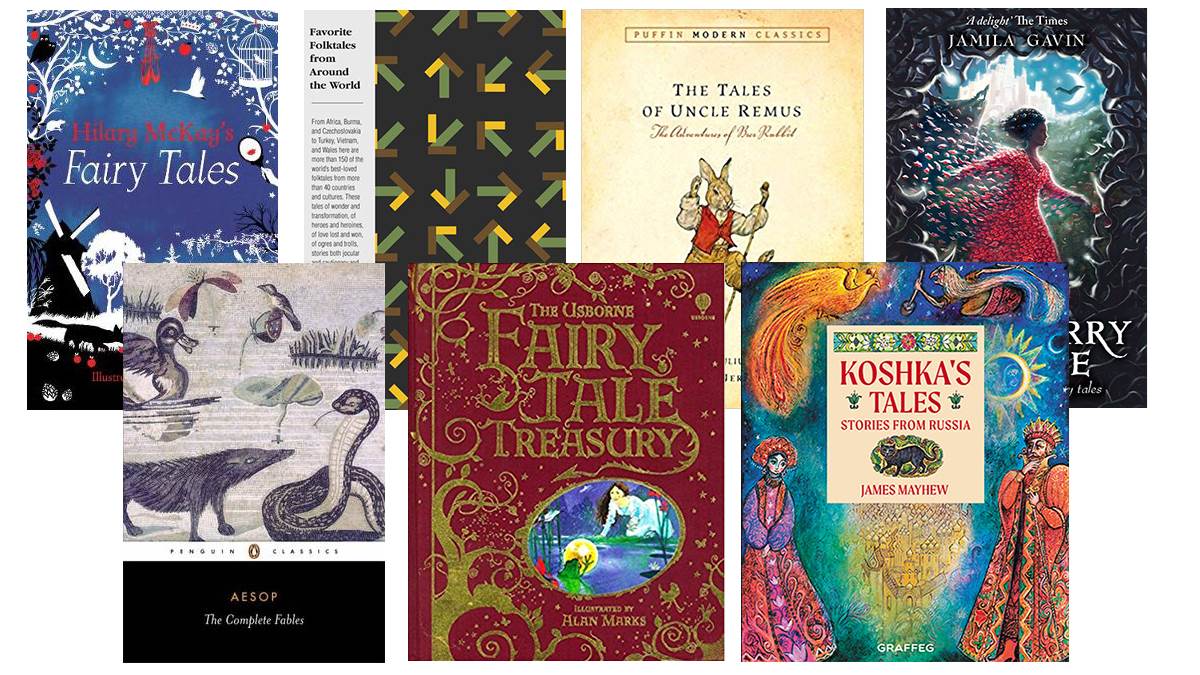Sophie Anderson: The power of telling stories from memory or imagination (or a bit of both)
Published on: 17 Medi 2019 Author: Sophie Anderson
Author Sophie Anderson talks about the magic of oral storytelling and how we are all natural born storytellers.
 Author Sophie Anderson with her book 'The Girl Who Speaks Bear'
Author Sophie Anderson with her book 'The Girl Who Speaks Bear'
The stories I remember most from childhood were not read to me from books. They were told to me, from memory, by my grandmother. She heard them from her parents and grandparents, who heard them from their parents and grandparents, so these stories had travelled through time and space, from a faraway land, long, long ago.
I remember sitting next to my grandmother on her piano stool and being captivated by her tales. She spoke them from her heart and soul, and embellished them with music, gestures, tears and laughter. Her stories were nothing like those found in books. I knew, deep inside, they were far more powerful. My grandmother’s stories were both ancient and new, truth and fantasy. They came from a magical place where memories and imagination merge. And it wasn’t only my grandmother who had this storytelling power.
After visiting my grandmother, my mother would drive my brothers and I home, late at night over the seemingly endless Welsh hills. The only light would be from faint, distant stars, and dark shadows would chase after our car and leap from bends in the road. Snuggled under a blanket to protect against drafts, my brothers and I would beg my mother to tell us ghost stories.
My mother’s ghost stories always felt true. They were about people and places we knew, and involved inexplicable changes in temperature, footsteps in sealed attics, objects that moved when no one was looking, or ghostly apparitions seen by crowds. Her stories terrified and fascinated us, and my brothers and I would snuggle deep into the blanket and savour every word.
These storytelling experiences were decades ago, yet I vividly remember both the stories and how they made me feel. Now I am a parent, I love telling stories to my own children. And the stories they ask for most, the ones that make their eyes shine brightest, are not the ones we read in books, but the ones I tell from memory or imagination (or a bit of both).
The story becomes a living, evolving thing
Since the publication of my first book, The House with Chicken Legs, I’ve visited many schools. At the start of each visit, I read an excerpt from my book, and the children listen quietly. Towards the end of my visit, I reimagine a fairy tale with pupils. This is a group storytelling activity, where pupils choose a fairy tale, then change aspects of the story; such as setting, characters and key events.
The contrast between me reading to pupils and the oral storytelling activity is huge. During the storytelling, pupils are not only listening but are actively engaged. They are living the story; they can contribute to its development and their reactions become part of the experience. The story becomes a living, evolving thing, and the room fills with excitement.
The power of storytelling definitely influenced my second book, The Girl Who Speaks Bear. A character called Anatoly walked into the second chapter, unplanned and unannounced, and proceeded to tell the main character a story. This story enchanted the main character, Yanka. She felt the tale contained clues to her past, and it pulled her towards an adventure filled with wonders.
When I finished writing The Girl Who Speaks Bear, I realized how the importance of stories in Yanka’s life mirrors the importance of stories in my own life. Stories shape us; they remind us of our past, yet give us the power to imagine our own futures. And for both Yanka and I, it has been oral stories that have been the most important, perhaps because they have been so personal.
We are all natural born storytellers
Oral storytelling gives us the opportunity to tailor stories to an audience, so create powerful, personal connections. It’s a wonderful art to experiment with, especially if you have children or grandchildren or pupils to share the experience with.

When choosing a tale to tell, I usually browse collections of folk or fairy tales, fables, myths or legends. These traditional stories have been passed down orally for thousands of years, and often contain easy to remember patterns, and language which feel natural when spoken. I find a story I feel a connection with, then try to memorise it. I don’t worry about the details – I focus on key characters and events. Then I put the book down and retell the story my own way. I don’t worry if I forget bits, or get bits wrong. In fact I enjoy changing things at my own whim, or my listeners’ suggestions. I believe part of the beauty of oral storytelling is that each tale told becomes unique and special.
There are lots of places to look for inspiration for stories. You could use stories from your own life, stories you’ve heard from others, stories you’ve read, stories inspired by your surroundings, or stories from your imagination. We are all natural born storytellers and are surrounded by stories every day.
Listening to a professional storyteller is an incredible experience that might provide inspiration, too. There are many events around the country, details of which can often be found in local libraries. And for more information and storytelling tips, the Society of Storytelling is a great place to visit.
Here are a few of my favourite books to inspire oral tales:
- The Complete Fables by Aesop contains wonderful short stories suitable for the youngest audience upwards.
- There are so many Fairy Tale Treasuries it’s hard to pick just one - I would suggest exploring a few at your local library! But a definite favourite of mine is Koshka’s Tales – Stories from Russia by James Mayhew, soon to be republished by Graffeg.
- Hilary McKay’s Fairy Tales, illustrated by Sarah Gibb; and Blackberry Blue by Jamila Gavin, illustrated by Richard Collingridge, showcase how much fun you can have reimagining familiar fairy tales in your own way.
- Favorite Folktales from Around the World by Jane Yolen is a bumper collection of folktales with something for all ages.
- The Adventures of Brer Rabbit by Julius Lester contains some of my favourite tales from when I was young, perfect for oral storytelling.
Topics: Reading for pleasure, Features






Add a comment